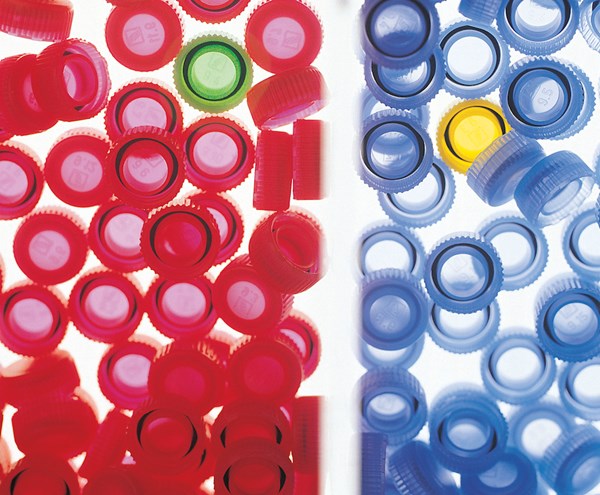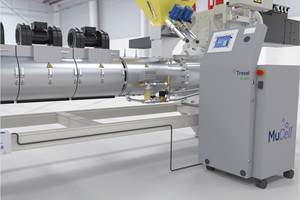PE, PP March Into March with Upward Pricing
PetroChemWire shares its current outlook on polyolefin prices with polyolefins pointing higher.
PetroChemWire shares its current outlook on polyolefin prices with polyolefins pointing higher.
Higher prices for both PE and PP are expected to be in place by end of this month, and further price increase attempts are underway for March, but how they shake out is not entirely clear. In this third week of the shortest month of the year, I checked in with senior editor David Barry at Houston-based PetroChemWire (PCW). One thing that appears to be applicable to both PE and PP is that availability of both resins is categorized as relatively tight, at least at this juncture.
• PE update: Polyolefin suppliers have been intent on implementing their February 1, 5燃/lb increase and all indications are that this will be a full implementation. They are also out with a March 1, 6燃/lb price hike.
Asked how he sees things faring for these price initiatives, PCW’s Barry says, “I’m not seeing any weakness at all in the February 5燃/lb increase initiative. It’s a little too soon to get a good read on the March PE increase, but end users are saying that it would be difficult for the market to absorb an 11燃/lb increase in a period of two months. The big question in my mind is whether the strong domestic demand pattern will hold up in March. Also, what will happen to the crude oil market?”
Barry’s assessment is that barring another upward push on crude oil prices, domestic PE suppliers will have difficulty squeezing a much higher price out of the international PE market. The export market, which has been a significant outlet for suppliers, has already been challenged by higher spot PE prices as supplies became sparser.
• PP Update: Having moved up a whopping 10燃/lb in January, in step with propylene monomer contract settlement to 41燃/lb, PP prices are poised to move up this month on the order of 6-8燃/lb, based on yet unsettled price nominations for February monomer contracts.
PCW’s Feb. 17, weekly report noted that preliminary industry data for January showed PP production rates—which had been throttled back in fourth quarter 2016—are back above 90%. Also for last month, North American PP sales registered as the highest since December 2015. While January showed this surge in demand, PCW’s Barry doubts that this may be a sign of an overall trend at this moment in time.
“I’m getting mixed signals on PP demand, so I wouldn’t agree 100% that we’re in a strong demand environment. January domestic sales were above average, but February and March sales are likely to come out lower as end users respond to the propylene/PP price surge, which is viewed as a temporary trend. However, it’s not clear how far this plateau in propylene prices will extend. If PP demand suffers, that could offset any supply factors. And you can make some arguments that propylene supply won’t be as tight going forward.”
He explains the latter this way: cash costs for precursors propane and butane are falling relative to cash costs of ethane; PCW forward curves show them becoming cheaper than ethane starting in March. Moreover, olefin crackers yield significantly higher byproduct propylene production by cracking propane or butane instead of ethane.
Asked if he anticipates a new influx of imported PP pellets once again flooding the domestic market this year, or if this is less likely due to higher PP price globally, Barry says, “PP resin imports are on the way, but the volumes are not as great as a year ago because the prices in Asia are higher and the arbitrage window is narrower.”

Related Content
Breaking the Barrier: An Emerging Force in 9-Layer Film Packaging
Hamilton Plastics taps into its 30-plus years of know-how in high-barrier films by bringing novel, custom-engineered, nine-layer structures resulting from the investment in two new lines.
Read MoreFoam-Core Multilayer Blow Molding: How It’s Done
Learn here how to take advantage of new lightweighting and recycle utilization opportunities in consumer packaging, thanks to a collaboration of leaders in microcellular foaming and multilayer head design.
Read MoreThe Recycling Collaboration That Is Making Circular Film a Reality
Nova Chemicals and Novolex are commissioning a large mechanical recycling facility for film to film.
Read MoreFor Extrusion and Injection-Blow Molders, Numerous Upgrades in Machines and Services
Uniloy is revising its machinery lines across the board and strengthening after-sales services in tooling maintenance, spare parts and tech service.
Read MoreRead Next
Lead the Conversation, Change the Conversation
Coverage of single-use plastics can be both misleading and demoralizing. Here are 10 tips for changing the perception of the plastics industry at your company and in your community.
Read MoreFor PLASTICS' CEO Seaholm, NPE to Shine Light on Sustainability Successes
With advocacy, communication and sustainability as three main pillars, Seaholm leads a trade association to NPE that ‘is more active today than we have ever been.’
Read More













